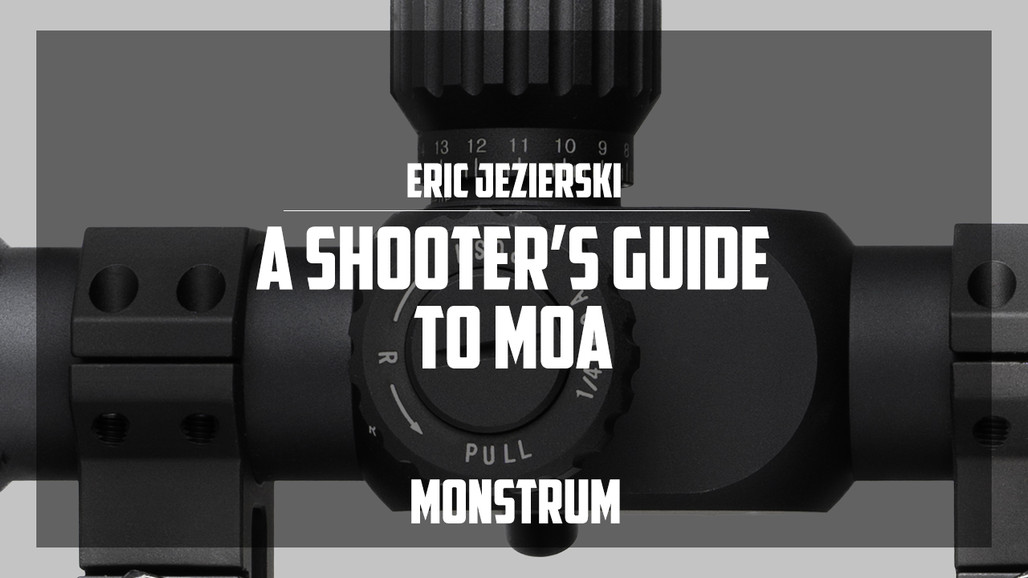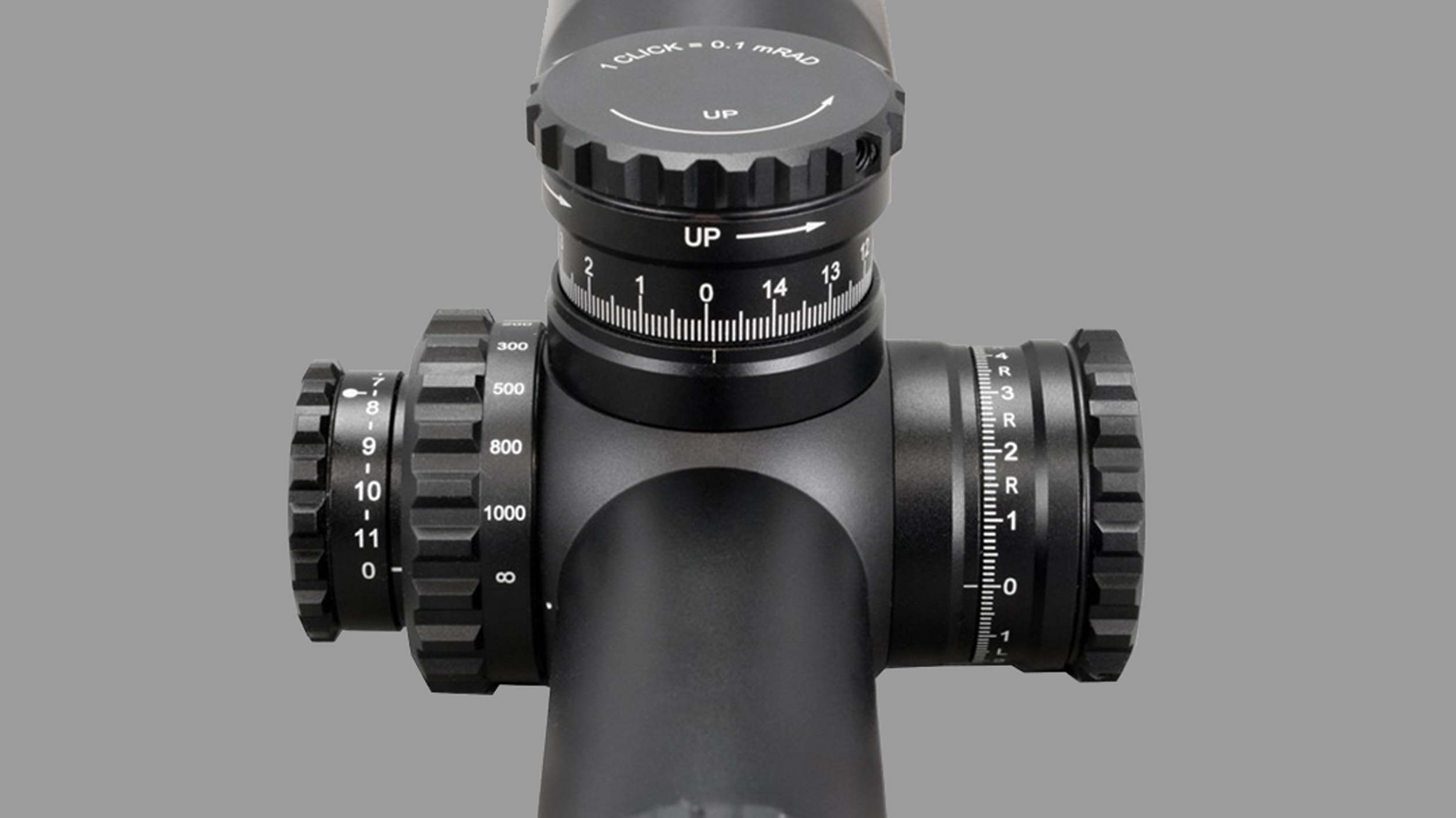
A Shooter's Guide to MOA
Posted by Eric Jezierski on Jun 18th 2019
When talking with experienced shooters and precision rifle enthusiasts, you are bound to hear intimidating jargon. One common acronym that is regularly tossed around is MOA. What is MOA? What does it mean? Why should you care about it? Read on for a break down on what MOA means, and how you can use it to your advantage.
What Does MOA Mean?
MOA is an acronym for Minute of Angle, and it is a unit of measurement for shooters. That probably doesn’t help much on its own, so let’s dig deeper. The simplest way to think about MOA is that it is a consistent angle from the point of angle to the point of impact on a target; 1 minute of angle is measured as roughly 1 inch at 100 yards. When a shooter tells you that his rifle is capable of 1 MOA, he or she is more than likely claiming that their rifle is capable of shooting a group where all rounds impact within 1 inch of each other at a 100 yard target.
***To get more specific, an MOA is 1/60th of a degree. While it is commonly stated that 1 MOA is an inch at 100 yards, technically it is 1.047 inches at 100 yards; it is unlikely that this piece of trivia will do much for your shooting, but you can use it to gain credit at the gun club bar.***

How Do I Use This Information?
There are two main benefits to understanding MOA. The first benefit is that you will be better equipped to adjust your shot placement at range if you understand how to measure in MOA. You will also be able to use MOA to estimate ranges and increase your ability to make first round hits at long range.
We know that 1 MOA is about an inch at 100 yards, and this ratio will remain consistent regardless of range. 2 inches at 200 yards, 3 inches at 300 yards, etc. This formula is so simple even a grunt can figure it out, and that is one of the benefits of using this unit of measurement over the alternatives, such as mil radians (more on that later).
Let’s assume we are shooting at 400 yards, and our point of impact is landing 8 inches to the right. We want to adjust our scope, so our point of impact matches our point of aim. We adjust the scope 8 inches to the left. We know that 1 MOA at 400 yards will be 4 inches, so we can use very simple math to determine that a 2 MOA adjustment to the left will give us our 8 inches we want.
One trap that can be easy to fall into is thinking in clicks on your scope turrets. Make sure you continue to make adjustments in MOA and not clicks, because different scopes will have different adjustments per click. If you learn to make adjustments by clicks, you will become lost if you are using a different system with a finer or coarser adjustment.
Like I stated, we can also use our knowledge of MOA to estimate ranges with a fair degree of accuracy. One of the most common targets for precision shooters is the silhouette target that is designed to replicate the size and shape of an adult combatant. The average width of an adult male combatant has been determined to be 36 inches shoulder to shoulder. Using that information, and the MOA hashmarks in our reticle, we can estimate how far a target is from us. Use the following formula to take advantage of this technique:
100 x (Size of the target in inches / MOA) = Distance to target in yards
***technically is 95.5 x (Size of the target in inches / MOA) = Distance to target in yards but again using the 100 to 1 ratio for ease of use***
So, if your target is a silhouette (36 inches wide) and the measures 6 MOA on your reticle, we can estimate that the target is 600 yards away. This will help you determine how much bullet drop to compensate for and to make any necessary windage adjustments correctly.
But what if your target isn’t a silhouette and you need to determine the size of the target? Most precision long range shooters are going to be using some piece of equipment that can accurately measure ranges, but they won’t always know how big their target is. Knowing the size of the target will be important in making adjustments for follow up shots, so we can easily reverse the formula to determine size.
Range (in yards) x MOA in the reticle / 100 = Width of target (in inches)
This can be especially helpful in precision rifle shooting matches where both time and accuracy are crucial.
Other Considerations
I mentioned earlier that MOA is not the only possible measurement used in precision shooting. The other popular unit of measurement is mil radians, or often just called mils. The simple answer as to why there are two measurements is to compare them to Imperial and Metric units of measurement. They are just two ways to get to the same answer. It is important that you know what unit of measurement your equipment uses though before you start attempting to make adjustments.
There is one problem that plagues many bargain shoppers when purchasing optics for their rifle. It is not uncommon to find that a scope may have a reticle that has measurements in mils integrated, but the turrets make adjustments in MOA. This can be a problem for obvious reasons, because if you don’t have the conversion charts and formulas to go between mils and MOA memorized you are going to have a great deal of difficulty using your scope to make any kind of adjustments. Even if you do have a beautiful mind and the conversion is not a problem for you, it still adds unnecessary time and complication to the process of making adjustments to your point of impact.
Bottom line: make sure your reticle and your turrets both use the same unit of measurement.

Now You’re an Expert, Right?
Hopefully this helps you gain a grasp on the concept of MOA and how you can use it to your advantage. By understanding what this unit of measurement is, and how it can be used to manipulate the difference between point of aim and point of impact you will be better equipped to maximize the value packed into the construction of your rifle optics. It will also help you impress your friends when you are able to make the correct adjustments to get that first round hit at 1000 yards.
At Monstrum, we offer a variety of MOA scopes as well as mRAD scopes. You can find them here.

